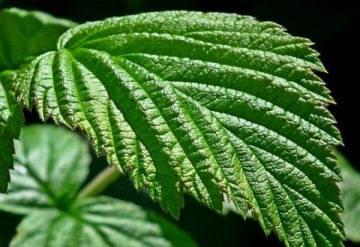The path of the village herbalist hasn’t always been an easy one. In Iceland, herbalism was illegal to practice until 15 years ago. During that time, herbalists were left to their own devices without any action being taken. Before it was legal they could risk the practice as long as they kept their heads down.
A lot of herbs which are legal to use both in Europe and the US are illegal in Iceland. The Icelandic flora lacks herbs for the nervous system and a lot of the popular herbs for the nervous system like St. John’s Wort, Passion Flower, Kava kava, and Valerian are illegal in Iceland. However, Roseroot (Rhodiola rosea) grows in Iceland and as a consequence of the above restrictions, it is one of the few herbs that’s approved for medicinal use. Over the years, I have used Roseroot extensively for the nervous system with very good results.
In the old days, it was believed that Roseroot had protective powers and it was good to have it near or to lay it at the bedside to ward off all evil. It was also considered good for a woman who was having trouble in childbirth to put Roseroot in her bed so it touched her. It was thought to be good for hair loss; other Icelandic names for Roseroot were “greiðurót” (comb root) and “höfuðrót” (head root). Another old Icelandic name was “svæfla” (lull to sleep), which indicates it was good for insomnia. It was also called “munnsviðarót”(mouth ulcer root).
The use of Roseroot in Western Europe and North America is fairly new. However, it has been used for generations as a medicinal herb in Eastern Europe and Asia. It’s traditionally used to increase physical stamina and in Tibet it’s used for lack of oxygen, e.g. to prevent mountain sickness. It’s also tradition to use Roseroot for psychological stress, restlessness, anxiety, fatigue, depression, and insomnia. In Iceland, it’s sometimes called the ginseng of the north or Viagra of the north, as a reference for its popularity for treating impotency. Roseroot is also an astringent and so works well for diarrhea and as an ointment for inflammation and rashes. In Tibet, it’s used to reduce fevers, ease coughs, and clean the lungs of odor. Moreover, Roseroot is used for pneumonia, colds and influenza, halitosis, and bad underarm perspiration.
Main uses of Roseroot:
- Stress
- Anxiety
- Fatigue
- ADHD
- Depression
- Insomnia
- Impotency
- Increases physical and mental stamina
Clinical research has been done on the efficacy of Roseroot on fatigue, exhaustion, lack of concentration, and short-term memory, all with positive results, while it has also been seen to have a positive effect on impotence and sleep. In clinical research, adverse reaction from Roseroot was found to be negligible, and, in addition, in vivo and vitro tests have supported the theory that Roseroot has positive effects on psychological stress, depression, and anxiety.
“The decoction of Roseroot taken in, warms, dries and constricts, heals sore mouths, cleans kidneys of sand which would become gravel, stops diarrhea, heals headaches and strengthens the head and also hair growth if the head is washed with it. The root is good to place over bad sores. Chopped, bruised and mixed with butter, it reduces swelling, eases both backache, joint ache and other ailments, especially if it is warm when used. It is considered healthy for leprous people.” Icelandic text from 1830.
ANNA RÓSA RÓBERTSDÓTTIR studied medical herbalism at the College of Phytotherapy in the UK and is a member of the UK National Institute of Medical Herbalists. She has a ITEC Diploma in massage and a B.Sc. degree in business from the University of Reykjavik.
Anna Rósa has worked as a consultant in her own herbal practice for over two decades. A frequent lecturer on the use of Icelandic herbs, she has taught in the US, Canada, and Europe. Anna Rósa also runs a successful herbal product business producing her own creams, ointments and tinctures. She is the author of Icelandic Herbs and Their Medicinal Uses. She wildcrafts all the Icelandic herbs used in her production. More information can be found at www.annarosaskincare.com.
Roseroot photos credit: Erling Olafsson








